|
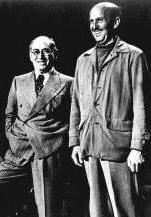 Michael
Powell was more of a director and Emeric Pressburger more a writer, but as "The Archers" from 1942 to 1957 they shared "Written,
Produced and Directed By" credit for some of the most well-regarded dramatic films of the time, including Black Narcissus,
Stairway to Heaven, I Know Where I'm Going and The Red Shoes -- widely considered the best film ever made about ballet.
But at the same time, together and occasionally separately, Powell and Pressburger are responsible for about a dozen classic action, suspense
or spy films that tend to get overlooked because of the excellence of their dramas. Most of their action/suspense films deal with World War
II themes in a mature, nearly anti-propagandist fashion. Germans are often decent and heroic. Allied characters are often seriously flawed.
The flag is waved, but reluctance is there. It's the heroism of chance. Heroism that can come from being in the wrong place at the wrong time. Michael
Powell was more of a director and Emeric Pressburger more a writer, but as "The Archers" from 1942 to 1957 they shared "Written,
Produced and Directed By" credit for some of the most well-regarded dramatic films of the time, including Black Narcissus,
Stairway to Heaven, I Know Where I'm Going and The Red Shoes -- widely considered the best film ever made about ballet.
But at the same time, together and occasionally separately, Powell and Pressburger are responsible for about a dozen classic action, suspense
or spy films that tend to get overlooked because of the excellence of their dramas. Most of their action/suspense films deal with World War
II themes in a mature, nearly anti-propagandist fashion. Germans are often decent and heroic. Allied characters are often seriously flawed.
The flag is waved, but reluctance is there. It's the heroism of chance. Heroism that can come from being in the wrong place at the wrong time.
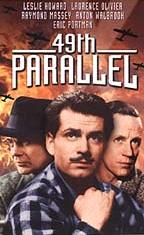 1) The 49th Parallel, 1941.
Pressburger received an Oscar for this story of the adventures of the remnants of German submarine crew shipwrecked in Canada who struggle
to make their way to the neutral haven of the United States in early 1941. The numbers of the Germans are whittled down in confrontations
with slow-to-be-heroic, ill-prepared Canadians. The panoramic Canadian landscapes add a subtextual grandness that simultaneously makes the
story seem large but also always dwarfs the characters -- little people in a grand struggle. 1) The 49th Parallel, 1941.
Pressburger received an Oscar for this story of the adventures of the remnants of German submarine crew shipwrecked in Canada who struggle
to make their way to the neutral haven of the United States in early 1941. The numbers of the Germans are whittled down in confrontations
with slow-to-be-heroic, ill-prepared Canadians. The panoramic Canadian landscapes add a subtextual grandness that simultaneously makes the
story seem large but also always dwarfs the characters -- little people in a grand struggle.
The opening narration that describes the US/Canadian
border as "the forty-ninth parallel, the only undefended frontier in the world" gives a hint of the real aim of the movie. Like other
films of the time, notably Foreign Correspondent and the underrated Arise, My Love, a clear goal here is to stir the hearts of
the isolationist American public. Leslie Howard and Laurence Olivier are among the stars playing average Canadians, but Raymond Massey gets
the best line: "I'm not asking for those pants, I'm just taking them." Also known as The Invaders.
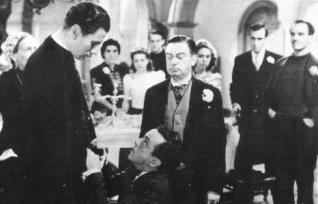 2)
One of Our Aircraft is Missing, 1942. Aircraft reverses the episodic 49th Parallel plot, this time telling the story of British bomber
crew shot down over Holland trying to make its way back to England, helped along the way by a series of average citizens with the Dutch underground.
Since the leads are British instead of nasty Nazis, Aircraft is quite a bit funnier, happier, with jokes about everything from actors,
to Yorkshire men to their none-too-bright soccer star turned radio man: "His brains are in his feet." At the same time, the very first
shot shows the names of five Dutch farmers executed for helping similarly downed British airmen. Each time the airmen are aided, if you remember
that first shot, the success of moving the men along the line is bittersweet. Many of the Archers' films feature unapologetically strong, courageous
women. That phenomenon is most in evidence in Aircraft, with the two principal heroes being Dutch women. We hardly even see a German, and
like other films they are not demonized as a nation: "They are an unhappy people." Treated much worse is the film's collaborating,
cowardly quisling. As on 49th Parallel, the editor is David Lean. Ronald Neame served as cinematographer. 2)
One of Our Aircraft is Missing, 1942. Aircraft reverses the episodic 49th Parallel plot, this time telling the story of British bomber
crew shot down over Holland trying to make its way back to England, helped along the way by a series of average citizens with the Dutch underground.
Since the leads are British instead of nasty Nazis, Aircraft is quite a bit funnier, happier, with jokes about everything from actors,
to Yorkshire men to their none-too-bright soccer star turned radio man: "His brains are in his feet." At the same time, the very first
shot shows the names of five Dutch farmers executed for helping similarly downed British airmen. Each time the airmen are aided, if you remember
that first shot, the success of moving the men along the line is bittersweet. Many of the Archers' films feature unapologetically strong, courageous
women. That phenomenon is most in evidence in Aircraft, with the two principal heroes being Dutch women. We hardly even see a German, and
like other films they are not demonized as a nation: "They are an unhappy people." Treated much worse is the film's collaborating,
cowardly quisling. As on 49th Parallel, the editor is David Lean. Ronald Neame served as cinematographer.
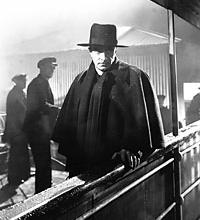 3) The Spy in Black, 1939. The first collaboration between Powell and Pressburger, Spy was released only a month before the start of World War II. This timing
is obvious in that the Germans are still being viewed as human beings, rather than only as murderous Nazis. Even more unique for its time is
the star-crossed romance with a married woman aspect of the story. Conrad Veidt and Valerie Hobson star. Also known as U-Boat 29. 3) The Spy in Black, 1939. The first collaboration between Powell and Pressburger, Spy was released only a month before the start of World War II. This timing
is obvious in that the Germans are still being viewed as human beings, rather than only as murderous Nazis. Even more unique for its time is
the star-crossed romance with a married woman aspect of the story. Conrad Veidt and Valerie Hobson star. Also known as U-Boat 29.
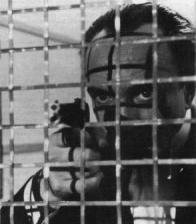 4) Contraband, 1940. Not a sequel,
but again Veidt and Hobson team up with Powell and Pressburger. This time the war is in full swing and Veidt plays a good-guy Danish ship's
captain rather than a sympathetic German, and instead of a schoolteacher Hobson plays a 1940s version of a bitch (who happens to be a spy). 4) Contraband, 1940. Not a sequel,
but again Veidt and Hobson team up with Powell and Pressburger. This time the war is in full swing and Veidt plays a good-guy Danish ship's
captain rather than a sympathetic German, and instead of a schoolteacher Hobson plays a 1940s version of a bitch (who happens to be a spy).
Love conquers all, of course, including the Germans -- and large number of discarded plaster busts of Neville Chamberlain. Like The 49th Parallel,
much of the film's message is aimed at Americans. The only disappointment here is that the film is much more full of life once Veidt and Hobson
begin to work with each other, rather than as adversaries. More of that 39 Steps-ish energy might have elevated this to a classic.
Also known as Blackout.
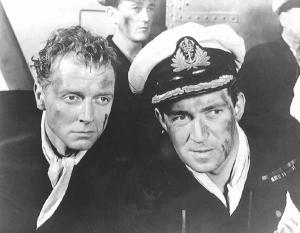 5)
The Battle of the River Plate, 1956. Based on the first great naval battle of World War II, the attention to historical detail is evident in the credits
which list many of the actual combatants as technical and creative advisors. In December 1939, before the fall of France, when the world only knew the War from
Germany's blitzkrieg of Poland, the battleship Admiral Graf Spee cruised the Indian and south Atlantic oceans sinking every British merchant ship it could find --
and avoiding battles with the Royal Navy. Germany had several of the most powerful surface ships in the war (like the Bismarck, which met a similar
fate in 1941), but it had far fewer ships than the Royal Navy. In the case of the Graf Spee, the British had three battleships that were larger and
faster, but the Graf Spee had no intention of coming in contact with any of them. And with thousands of miles of ocean to cover, the Royal Navy
had no real hope of forcing such a confrontation. That left the pursuit of the Graf Spee to smaller but more numerous ships. Armed with eleven
inch guns, the Graf Spee significantly outgunned the next largest naval vessels, cruisers, which were commonly armed with six or eight inch guns.
The Battle of the River Plate is the story of how three smaller cruisers (the Ajax, the Achilles and the Exeter) did battle with the larger,
faster Graf Spee off the coast of South America -- and the resulting worldwide fascination with this three black ants versus one red ant confrontation.
Also known as The Pursuit of the Graf Spee. 5)
The Battle of the River Plate, 1956. Based on the first great naval battle of World War II, the attention to historical detail is evident in the credits
which list many of the actual combatants as technical and creative advisors. In December 1939, before the fall of France, when the world only knew the War from
Germany's blitzkrieg of Poland, the battleship Admiral Graf Spee cruised the Indian and south Atlantic oceans sinking every British merchant ship it could find --
and avoiding battles with the Royal Navy. Germany had several of the most powerful surface ships in the war (like the Bismarck, which met a similar
fate in 1941), but it had far fewer ships than the Royal Navy. In the case of the Graf Spee, the British had three battleships that were larger and
faster, but the Graf Spee had no intention of coming in contact with any of them. And with thousands of miles of ocean to cover, the Royal Navy
had no real hope of forcing such a confrontation. That left the pursuit of the Graf Spee to smaller but more numerous ships. Armed with eleven
inch guns, the Graf Spee significantly outgunned the next largest naval vessels, cruisers, which were commonly armed with six or eight inch guns.
The Battle of the River Plate is the story of how three smaller cruisers (the Ajax, the Achilles and the Exeter) did battle with the larger,
faster Graf Spee off the coast of South America -- and the resulting worldwide fascination with this three black ants versus one red ant confrontation.
Also known as The Pursuit of the Graf Spee.
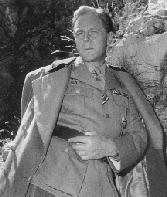 6)
Ill Met By Moonlight, 1957. The first forty-five minutes are pretty slow, but once the real story kicks in this turns into quite a nice film. In 1943,
Englishman Dirk Bogarde leads a band native Cretan guerillas in kidnapping the occupying commanding German general. The plan is to take him from Crete to Cairo
as a public relations coup. "Rommel never made it to Cairo, General, but you will." The slow beginning of the film actually contributes as the tension
continually mounts and the stakes increase toward the end of the film. In a way, an awful lot of time is wasted just to get to an excellent final
fifteen minutes. Also known as Night Ambush, this was Powell and Pressbuger's final film together, except for the children's film
The Boy Who Turned Yellow in 1972. 6)
Ill Met By Moonlight, 1957. The first forty-five minutes are pretty slow, but once the real story kicks in this turns into quite a nice film. In 1943,
Englishman Dirk Bogarde leads a band native Cretan guerillas in kidnapping the occupying commanding German general. The plan is to take him from Crete to Cairo
as a public relations coup. "Rommel never made it to Cairo, General, but you will." The slow beginning of the film actually contributes as the tension
continually mounts and the stakes increase toward the end of the film. In a way, an awful lot of time is wasted just to get to an excellent final
fifteen minutes. Also known as Night Ambush, this was Powell and Pressbuger's final film together, except for the children's film
The Boy Who Turned Yellow in 1972.
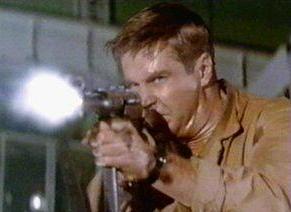 7) Operation Crossbow,
1965. Co-written by Pressburger under the name Richard Imrie, George Peppard leads a second-tier all-star cast in an action espionage story focusing
on the German V-1 and V-2, and the Allied efforts to derail the German rocket program. Trevor Howard is great as a twit-y "scientist"
who won't believe rockets are possible until one nearly lands on his head. 7) Operation Crossbow,
1965. Co-written by Pressburger under the name Richard Imrie, George Peppard leads a second-tier all-star cast in an action espionage story focusing
on the German V-1 and V-2, and the Allied efforts to derail the German rocket program. Trevor Howard is great as a twit-y "scientist"
who won't believe rockets are possible until one nearly lands on his head.
Sophia Loren is involved in a subplot in the middle of the film as
the wife of the deceased scientist Peppard is impersonating. While the subplot is not really important to the story, and it seems to drag on
for quite some time, the resolution is characteristic of a Pressburger film. Anthony Qualye and Lilli Palmer are very good.
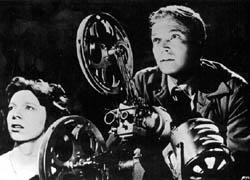 8) Peeping Tom, 1960. Creepy,
just creepy. This film is credited with killing Powell's career. While the stylized depravity is not only appreciated but admired by many modern
filmmakers, at the time it was widely detested. The story follows the demented adventures of a shy killer who films the fear on his victim's faces
as he murders them. 8) Peeping Tom, 1960. Creepy,
just creepy. This film is credited with killing Powell's career. While the stylized depravity is not only appreciated but admired by many modern
filmmakers, at the time it was widely detested. The story follows the demented adventures of a shy killer who films the fear on his victim's faces
as he murders them.
The childhood victim of similar sadistic experiments by his psychologist father, the viewers are put in the position of seeing
the killer with the same sort of morbid fascination that he gets from watching his films of his murders. Flamboyant, over the top, in your face,
gruesome bad taste from beginning to end, nonetheless Peeping Tom is a benchmark in movie history.
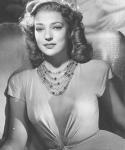 9) The Thief of Bagdad, 1940. THE Arabian Nights fantasy featuring flying carpet, giant genie, mechanical horse, diabolical wizard and the oh-so-beautiful June Duprez (also in
The Spy in Black) doing her best to burst out of her plunging costumes. Powell was one of three directors but every aspect from Technicolor
visuals to the action sequences to ain't-Duprez-gorgeous close-ups hits the mark. The most famous line in the film is: "I'm Abu the thief,
son of Abu the thief, grandson of Abu the thief...", but I like: "You master of 1000 fleas... Allah be with you -- but I doubt it." 9) The Thief of Bagdad, 1940. THE Arabian Nights fantasy featuring flying carpet, giant genie, mechanical horse, diabolical wizard and the oh-so-beautiful June Duprez (also in
The Spy in Black) doing her best to burst out of her plunging costumes. Powell was one of three directors but every aspect from Technicolor
visuals to the action sequences to ain't-Duprez-gorgeous close-ups hits the mark. The most famous line in the film is: "I'm Abu the thief,
son of Abu the thief, grandson of Abu the thief...", but I like: "You master of 1000 fleas... Allah be with you -- but I doubt it."
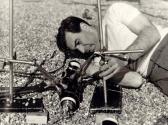 10) Small Back Room, 1949. Unlike Peeping Tom this film was loved by critics on release, but in many ways it shares common themes. Bitterness, weirdness,
drunkenness, masochism and unrelenting gloom in private relationships mix with a tense World War II bomb disposal story. It's Lost Weekend
meets Dam Busters... and then for good measure there are two shots of seagulls that were also used in The Thief of Bagdad. There
is probably some subtext significance to that, but it seems like just piling on more weirdness to me! Also known as Hour of Glory. 10) Small Back Room, 1949. Unlike Peeping Tom this film was loved by critics on release, but in many ways it shares common themes. Bitterness, weirdness,
drunkenness, masochism and unrelenting gloom in private relationships mix with a tense World War II bomb disposal story. It's Lost Weekend
meets Dam Busters... and then for good measure there are two shots of seagulls that were also used in The Thief of Bagdad. There
is probably some subtext significance to that, but it seems like just piling on more weirdness to me! Also known as Hour of Glory.
Also Behold a Pale Horse (from a Pressburger novel, featuring a line about an exclusive prostitute: "She must be popular if she
can make her clients climb four floors."), The Elusive Pimpernel (uneven and overall mediocre but a nice performance by Margaret
Leighton), Wanted for Murder, Silver Fleet and the Life and Death of Colonel Blimp.
|